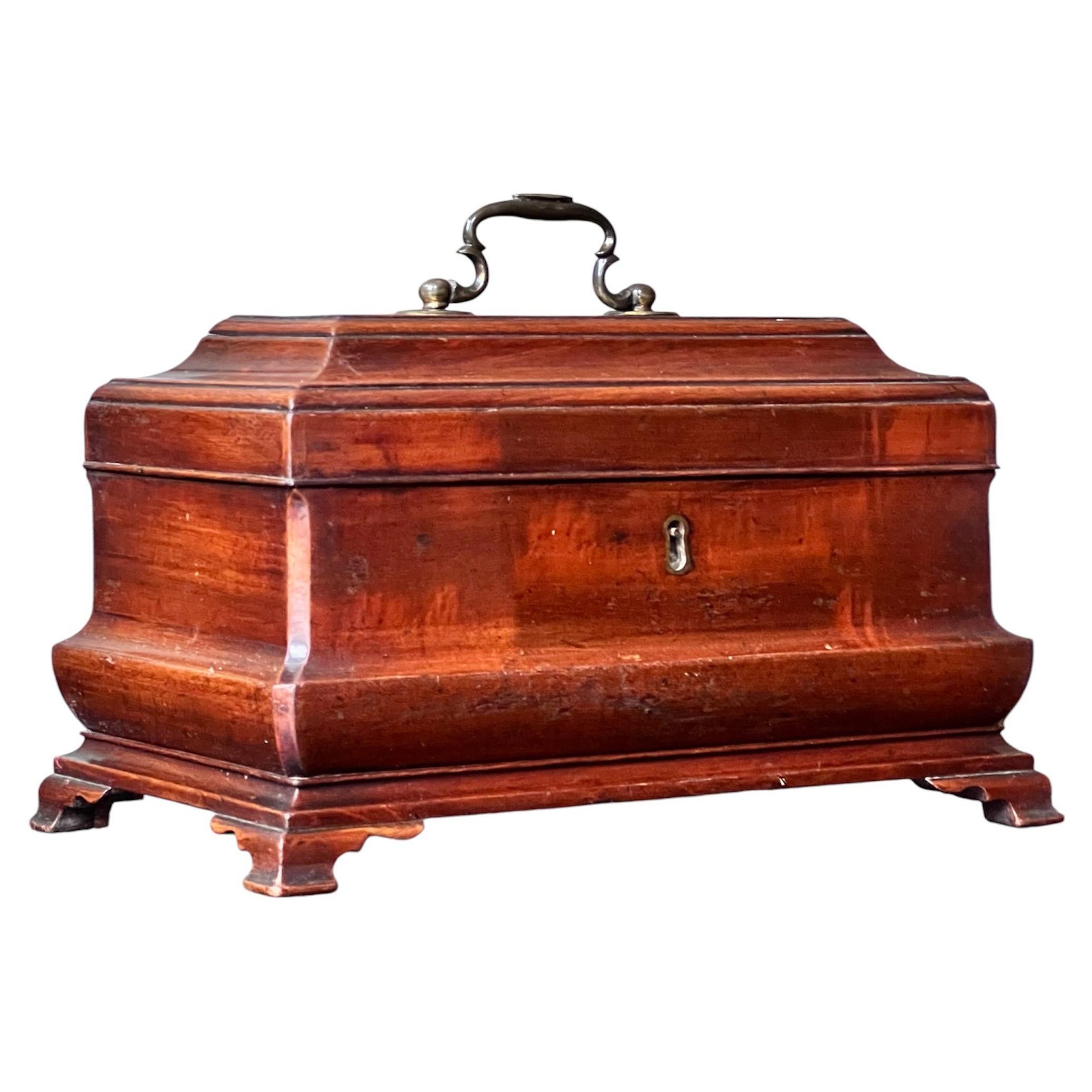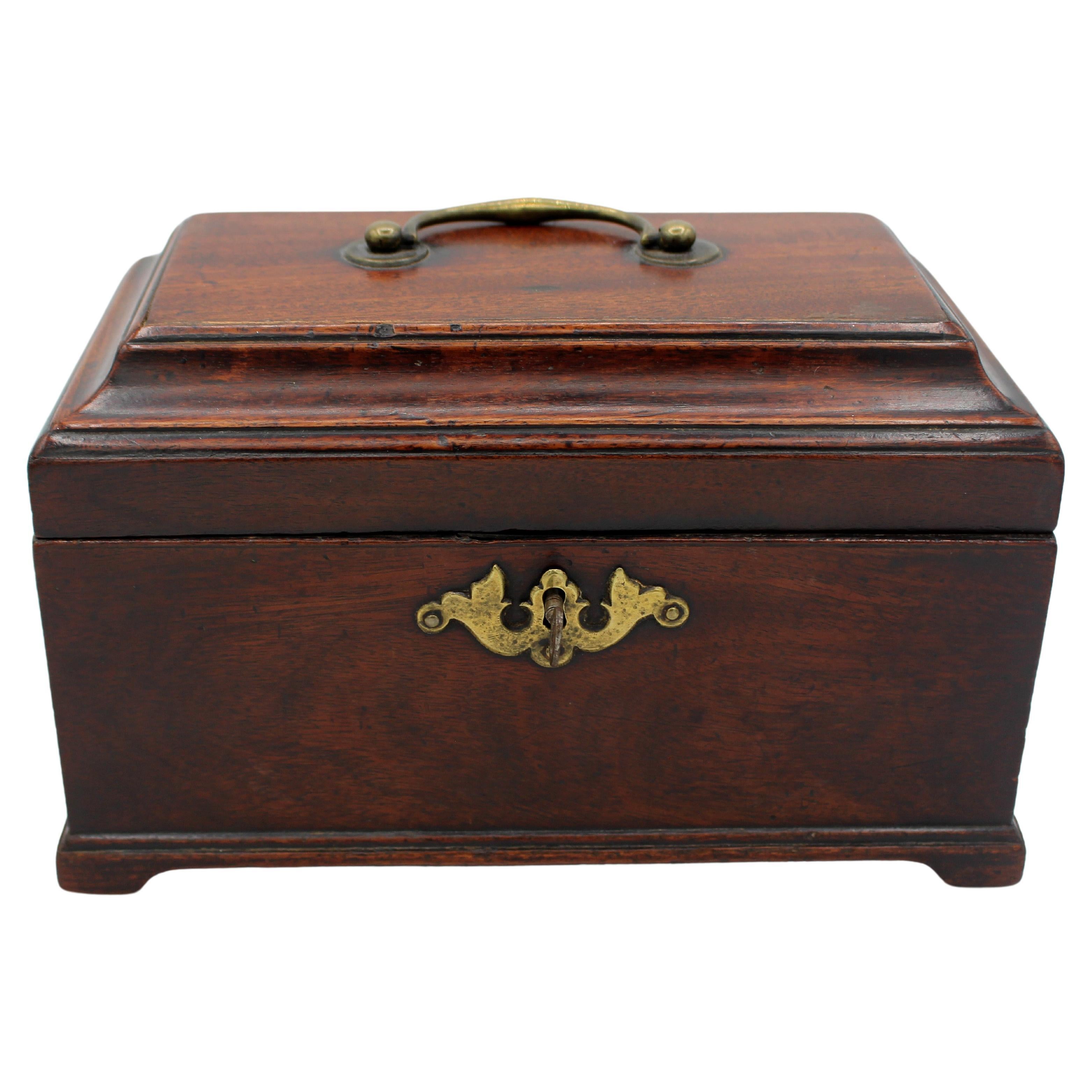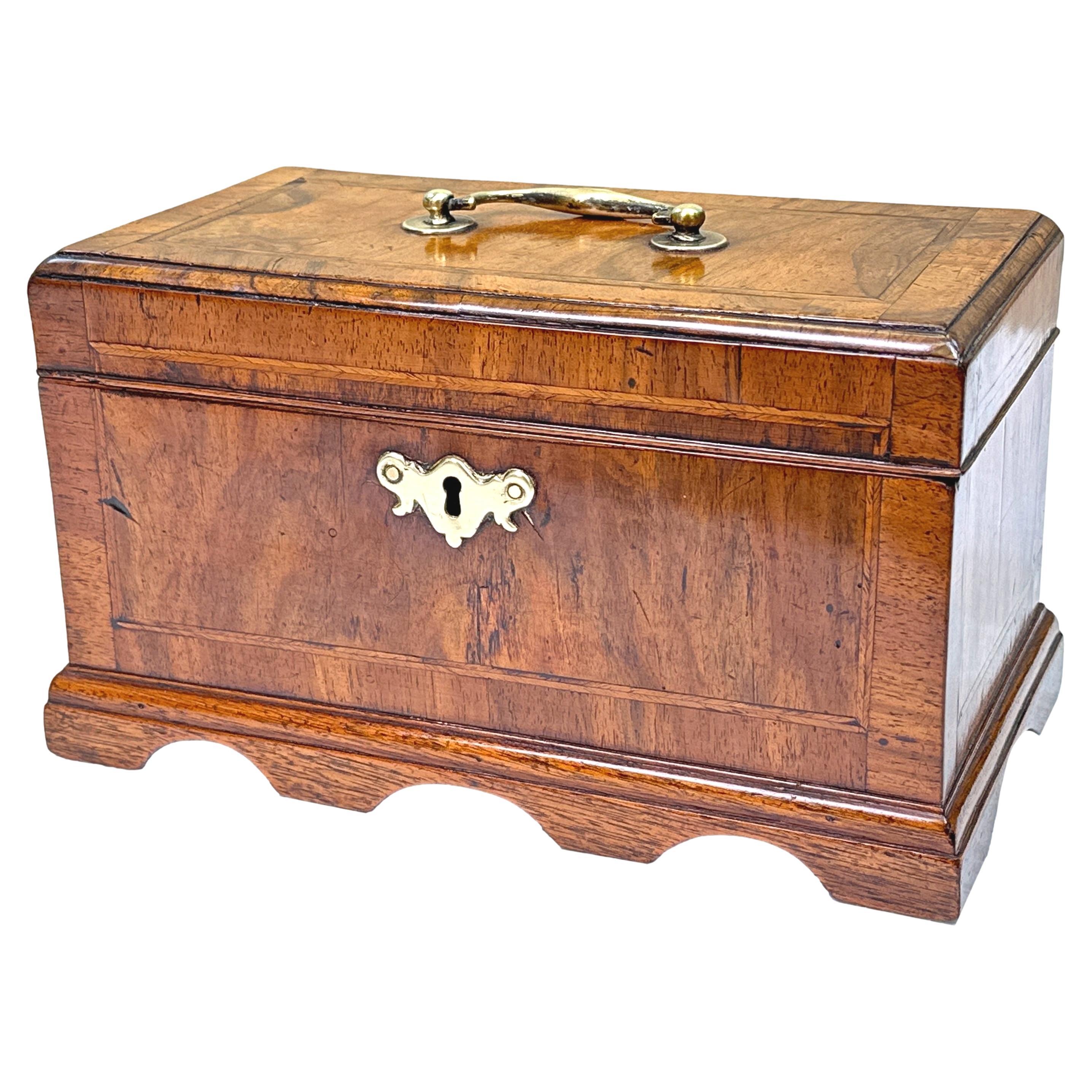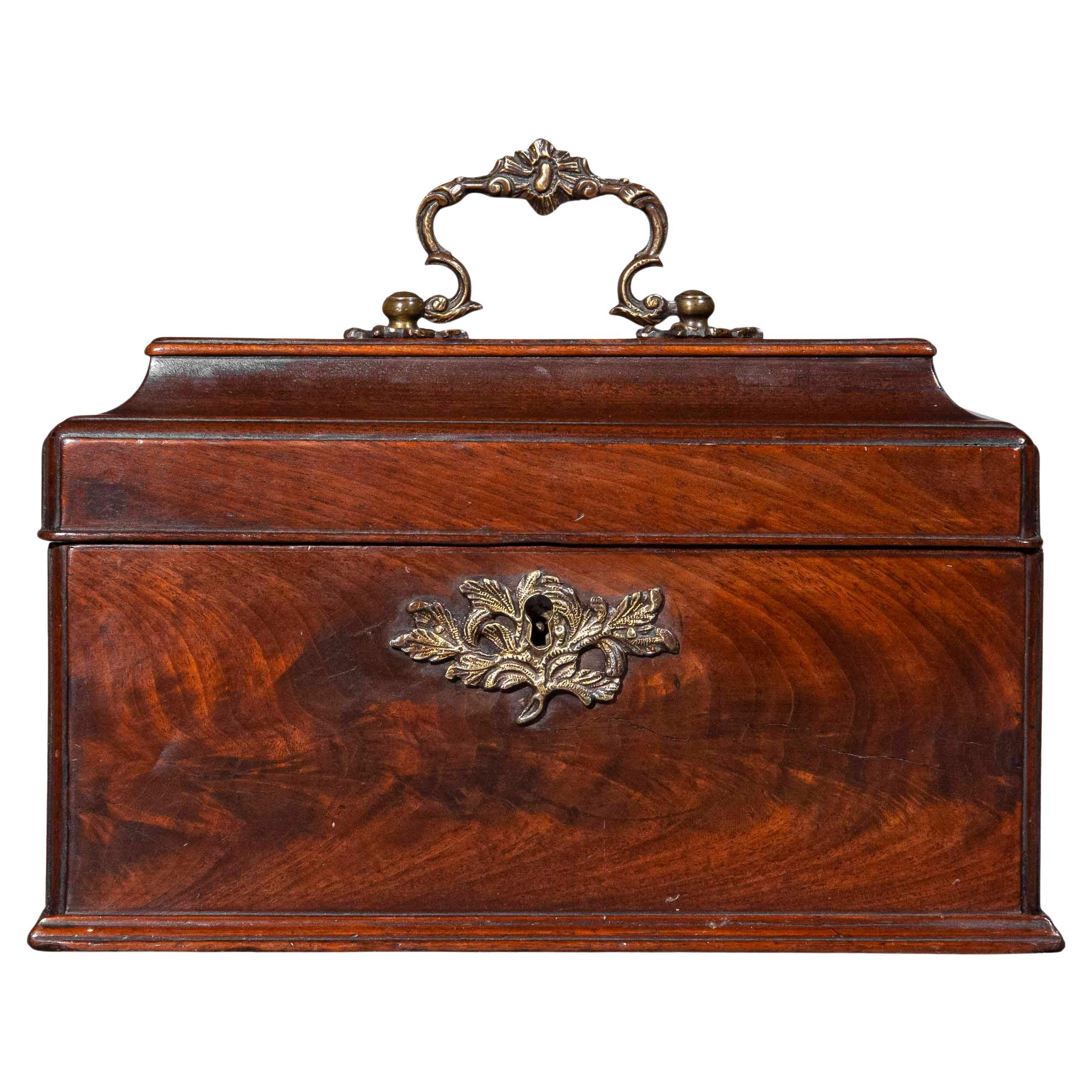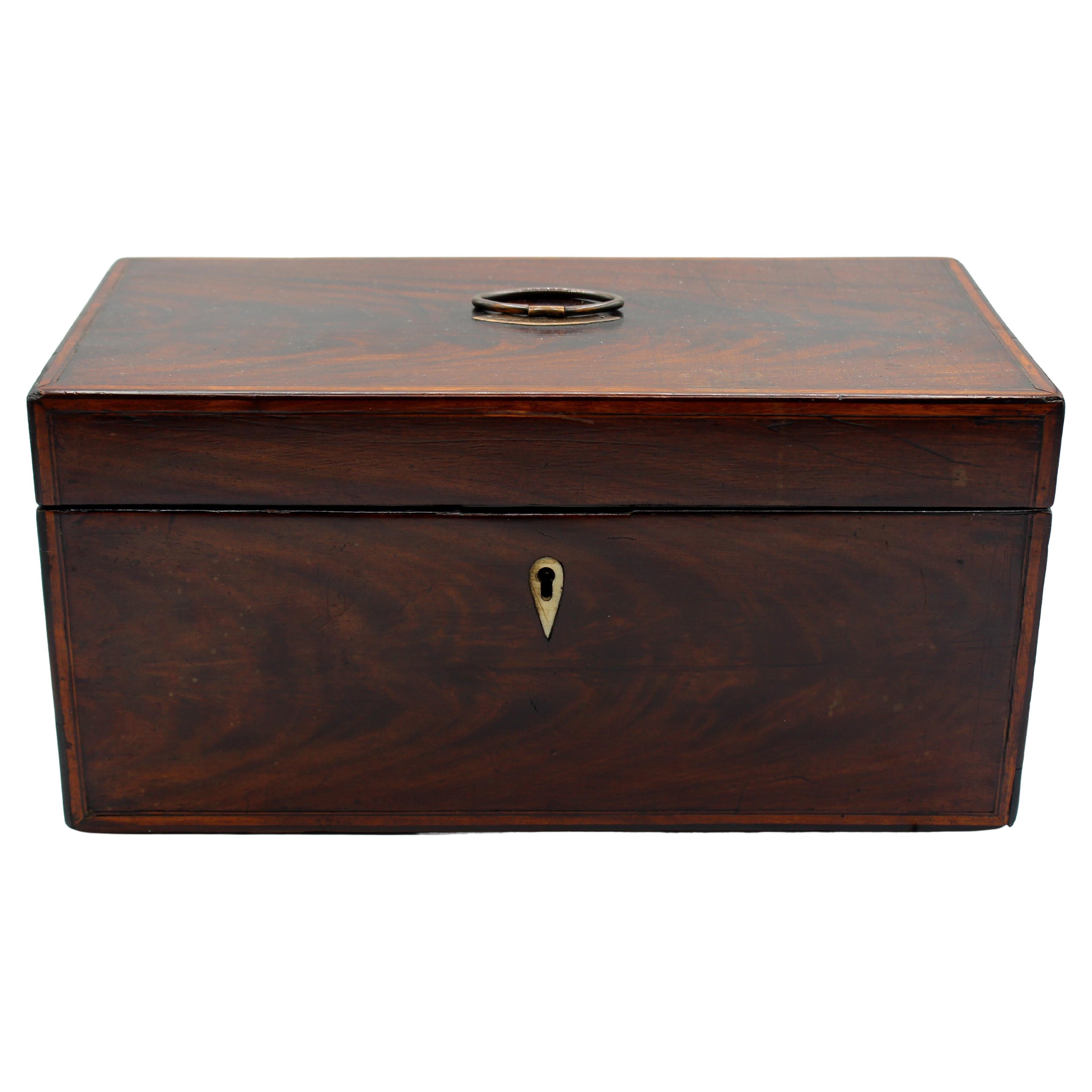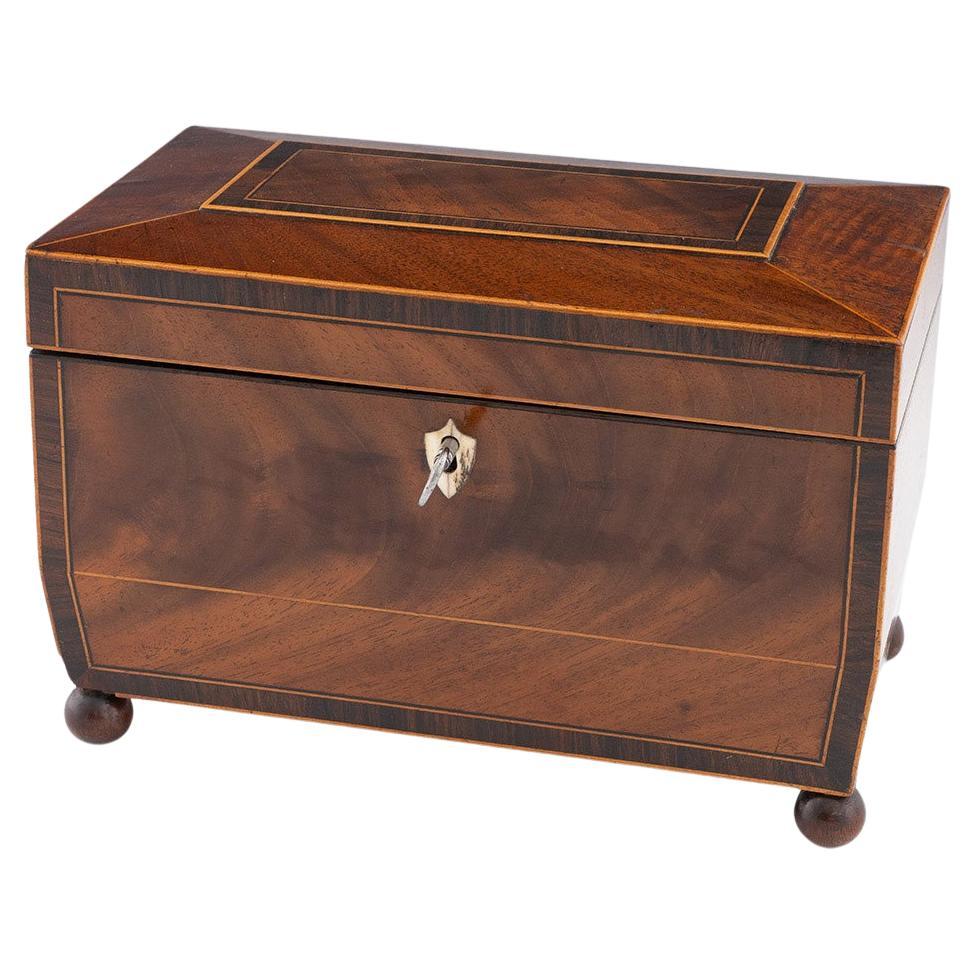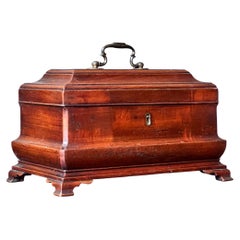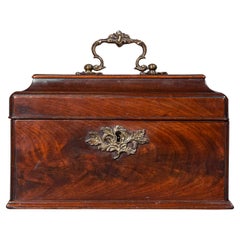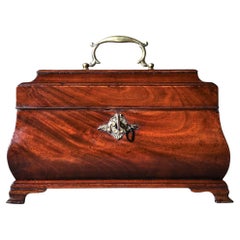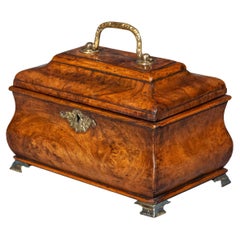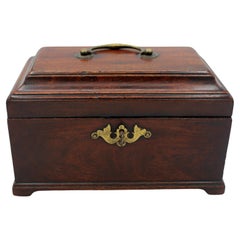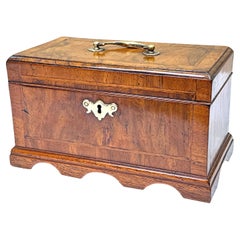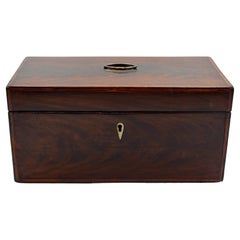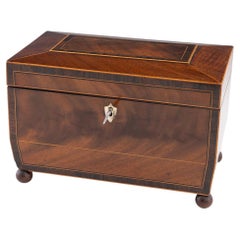Items Similar to Mid-18th Century George II Period Tea Chest, Manner of Abraham Roentgen
Want more images or videos?
Request additional images or videos from the seller
1 of 10
Mid-18th Century George II Period Tea Chest, Manner of Abraham Roentgen
$5,803.74
£4,200
€4,977.44
CA$8,011.51
A$8,925.39
CHF 4,682.39
MX$109,014.51
NOK 59,288.01
SEK 55,557.77
DKK 37,152.57
About the Item
This extremely rare tea-chest is a fine example of the mid-18th century fashion for brass-inlaid furniture and boxes, and undoubtedly originates from the circle of outstanding craftsmen, active in London in 1730-1750’s.
One such craftsman was the German cabinetmaker Johann Frederick Hintz, who ran a business at 'The Sign of the Porcupine Newport Street near Leicester Fields' during the 1730s. In an advertisement in the Daily Post in 1738, Hintz offered for sale 'A choice Parcel of Desks and Book-Cases of Mahogany, Tea-Tables, Tea-Chests, Tea-Boards, etc.: all curiously made and inlaid with fine Figures of Brass and Mother of Pearl'.
Hintz was a friend and associate of the better-known German maker, Abraham Roentgen, who was working in London during the years 1733 to 1738. A known group of similar tea chests attributed to Abraham Roentgen shares the same brass-strung corner pattern, with many also retaining the same handle as the present example. After returning to Germany, Roentgen is known to have imported brass mounts from England for his furniture, and possibly ordered them from pattern books acquired while he was in London.
Another common feature of Rontgen's tea-chests - and of those by makers of other brass-mounted and/or inlaid chests - is a shallow drawer for teaspoons in the base; in the present example the ‘secret’ drawer is revealed by sliding one side of the chest upwards. An identical device is illustrated in A.Clarke, Antique Boxes, Tea Caddies & Society, 2018, p.112 fig. 5.57, while fig. 5.56 represents a closely related Roentgen’s piece with the handle, identical to the present tea-chest.
Why we like it
Gorgeous proportions combined with figured mahogany and smart brass inlays. And who doesn’t like a secret spoon compartment?
Dimensions
Width: 25.5 cm / 10”
Depth: 16 cm / 6.25”
Height: 18 cm / 7”
- Dimensions:Height: 7 in (17.78 cm)Width: 10 in (25.4 cm)Depth: 6.25 in (15.88 cm)
- Style:George II (Of the Period)
- Materials and Techniques:
- Place of Origin:
- Period:
- Date of Manufacture:Circa 1750s
- Condition:Wear consistent with age and use. Ready for placement and immediate use.
- Seller Location:Richmond, GB
- Reference Number:1stDibs: LU1781244922302
About the Seller
5.0
Vetted Professional Seller
Every seller passes strict standards for authenticity and reliability
Established in 2014
1stDibs seller since 2016
237 sales on 1stDibs
Associations
LAPADA - The Association of Arts & Antiques Dealers
- ShippingRetrieving quote...Shipping from: Richmond, United Kingdom
- Return Policy
Authenticity Guarantee
In the unlikely event there’s an issue with an item’s authenticity, contact us within 1 year for a full refund. DetailsMoney-Back Guarantee
If your item is not as described, is damaged in transit, or does not arrive, contact us within 7 days for a full refund. Details24-Hour Cancellation
You have a 24-hour grace period in which to reconsider your purchase, with no questions asked.Vetted Professional Sellers
Our world-class sellers must adhere to strict standards for service and quality, maintaining the integrity of our listings.Price-Match Guarantee
If you find that a seller listed the same item for a lower price elsewhere, we’ll match it.Trusted Global Delivery
Our best-in-class carrier network provides specialized shipping options worldwide, including custom delivery.More From This Seller
View All18th Century Tea Caddy
Located in Richmond, London
An extremely rare, highly desirable, and sought-after model mid-18th century George III period tea caddy. Original brass-work. English, circa 1750.
Why we like it
Its distinctive a...
Category
Antique Mid-18th Century English George II Tea Caddies
Materials
Wood
$2,694
18th Century Chippendale Tea Caddy
Located in Richmond, London
An extremely rare, highly desirable, and sought-after model mid-18th century George III Chippendale period tea caddy. Original period metalwork.
English, circa 1750.
Why we like it...
Category
Antique Mid-18th Century European George II Tea Caddies
Materials
Wood
18th Century George III Bombe Tea Caddy
Located in Richmond, London
A superb mid-18th century George III period bombe tea caddy. English, circa 1760.
Why we like it
A totally original example complete with tin caniste...
Category
Antique Mid-18th Century English George III Tea Caddies
Materials
Brass
18th Century Burl Walnut Tea Caddy
By Thomas Chippendale
Located in Richmond, London
An early 18th century, George I period bombé-shaped tea caddy in dramatically figured burl walnut of a most desirable mellow, honey colour; complete with three tins inside.
British o...
Category
Antique Early 18th Century Welsh Tea Caddies
Materials
Brass
18th Century George III Chippendale Chest of Drawers
Located in Richmond, London
A rare fine quality Chippendale period chest of drawers or dressing chest in beautifully figured mahogany. English, c. 1770. It is an extraordinary opportunity to own a highly practi...
Category
Antique Mid-18th Century English George III Commodes and Chests of Drawers
Materials
Brass
18th Century George III Japanned Table Cabinet
Located in Richmond, London
A superb 18th century George III period miniature japanned collector’s cabinet depicting Oriental scenes, exotic birds, pagodas, butterflies etc. Engl...
Category
Antique Late 18th Century English Decorative Boxes
Materials
Brass
You May Also Like
Circa 1765 George III Period Tea Caddy Box, English
Located in Chapel Hill, NC
Circa 1765 George III period tea caddy box, English. Small & complete example raised on original bracket feet. Mahogany. Original hardware & lock with key. Contains 2 original tin te...
Category
Antique 1760s English George III Tea Caddies
Materials
Tin
$520 Sale Price
20% Off
18th Century Walnut Tea Caddy
Located in Bedfordshire, GB
An Attractive Early 18th Century George II Period Walnut Tea Caddy Of Rectangular Form, Having Crossbanded And Inlaid Decoration To Top Enclosing Three Divisions, With Original Brass...
Category
Antique Early 18th Century English George II Tea Caddies
Materials
Walnut
$1,426 Sale Price
30% Off
Circa 1790 English George III Period Tea Caddy Box
Located in Chapel Hill, NC
Circa 1790 George III period tea caddy box, English. Original inlaid inner caddies & a later cut glass sugar well. Old Sheffield plate silver pull. Banded in box or holly. Classic re...
Category
Antique 1790s English George III Tea Caddies
Materials
Sheffield Plate
Early 19th Century Tea Caddy of Sarcophagus Form c1830
Located in Tunbridge Wells, GB
Heading : Early 19th century tea caddy of sarcophagus form
Date : c1820
Period : Regency
Origin : England
Decoration : Of Sarcophagus form in magonay with pale strinign throughout. ...
Category
Antique 1830s British Regency Tea Caddies
Materials
Wood
George II Period Mahogany Tea Caddy
Located in Bedfordshire, GB
An 18th Century, George II Period, Mahogany Rectangular Tea Caddy Having Original Brass Swan Neck Handle To Hinged Top, Enclosing Three Interior Divisions And Elegant Canted Corners,...
Category
Antique Early 18th Century English George II Tea Caddies
Materials
Mahogany
$1,155 Sale Price
30% Off
George III Period Mahogany Tea Caddy
Located in Bedfordshire, GB
A Very Good Quality 18th century, Georgian Mahogany Rectangular Tea Caddy, Having Original Brass Handle To Hinged Top, Enclosing Divisions, With Unusual Glazed Panels To Front Bearin...
Category
Antique Mid-18th Century English George III Tea Caddies
Materials
Mahogany
$865 Sale Price
30% Off
More Ways To Browse
Inlaid Antique Furniture
Tea Height
Midcentury Tea Tables
Tea Chest
18th Century Tea Table
Frederick Ii
Newport Furniture
18th Century Spoons
Tea Table With Inlay
18th Century German Table
Brass Spoon
Circle Desk
Germany Spoons
18th Century Rare Books
Mother Of Pearl Desk
Antique Tea Chest
Antique Tea Chests
Book Boxes
